Now Climate Wikience displays isolines for satellite data. Until now, Climate Wikience was able to display isolines only for data without missing values like climate reanalysis. However, satellite measurements often have areas without data due to clouds or other reasons. Improved algorithm of Climate Wikience now draws isolines for data with missing values.
Below are examples of visualizing isolines for satellite data.
Click an image for its bigger version.
Below are examples of visualizing isolines for satellite data.
Click an image for its bigger version.
Eastward wind speed for 10 meters above sea surface (u10m) on the 28th of August, 2005. Blended data product from several satellites including QuikSCAT, SSMIs, TMI and AMSR-E.
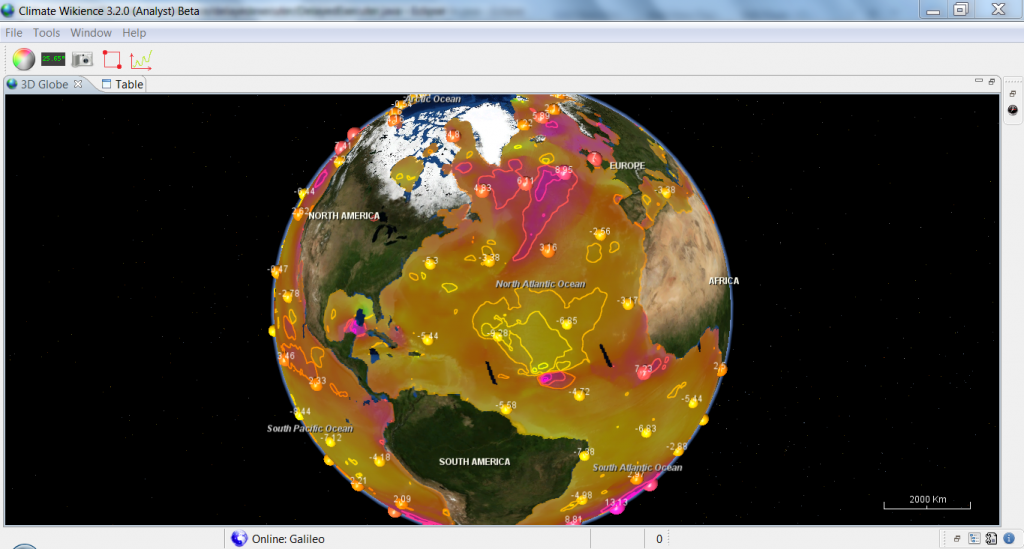 [1]
[1]
NASA MERRA Leaf Are Index (LAI) on the 28th of August, 2010.
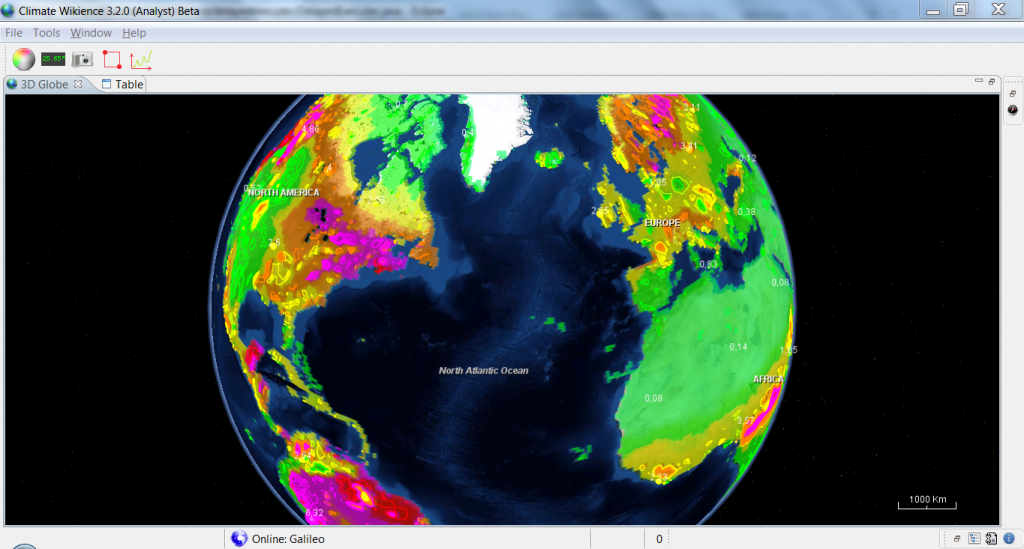 [2]
[2]
Zoom at North America, Eurasia, and South America.
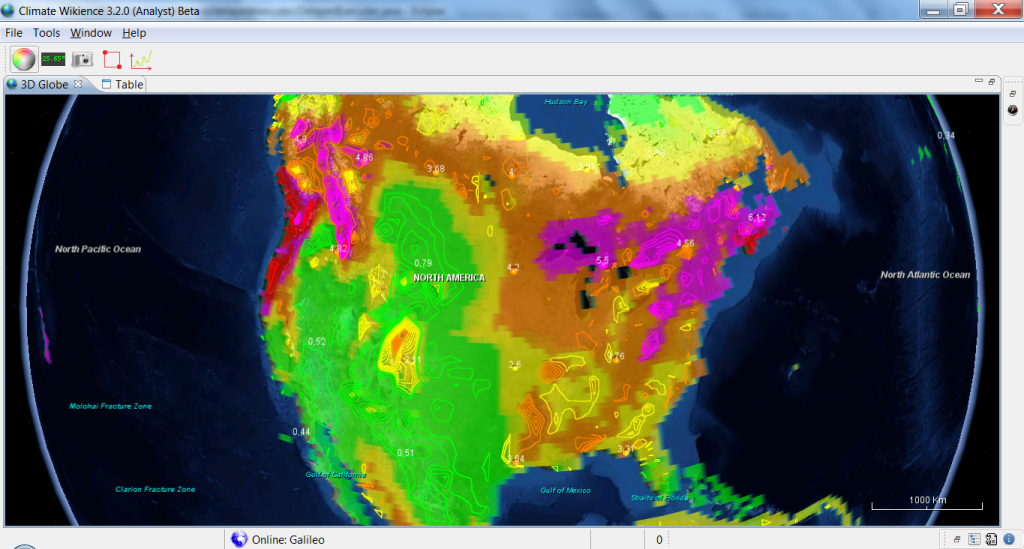 [3]
[3]
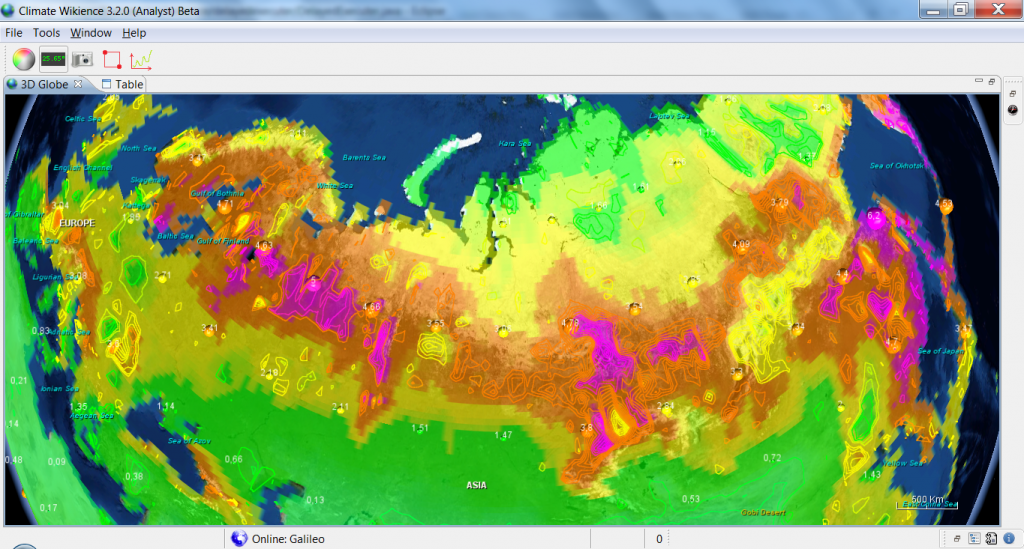 [4]
[4]
|
You can label any isoline at its arbitrary point. Simply enable “Click for value” option at the “Properties tab”. A label with isoline value will appear at the point where you clicked on the isoline. Click on the isoline again to hide the label.
|
Zoom over South America with several labeled isolines and increased width of isolines (compare “Properties tab” of this image and the one below).
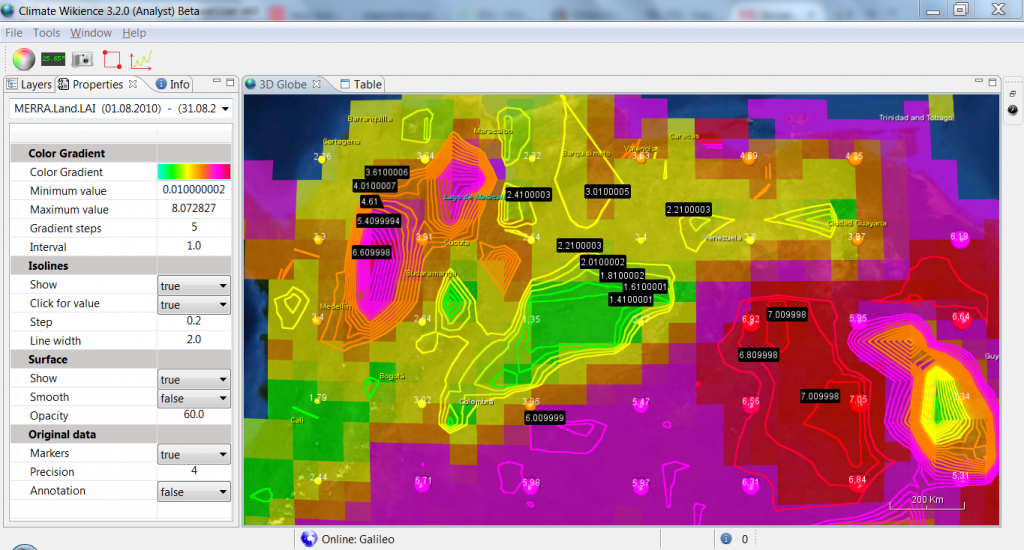 [5]
[5]
The same area without isolines labelling.
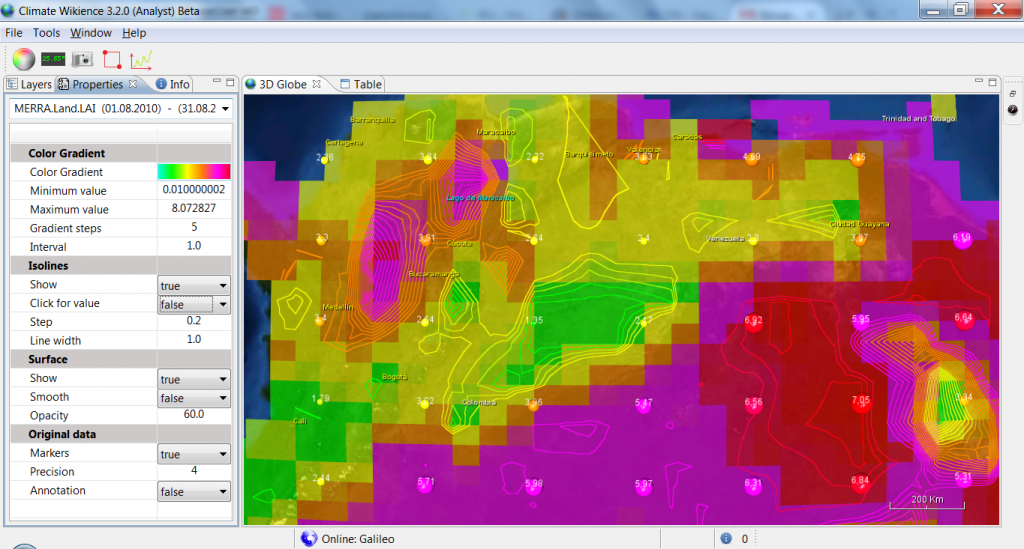 [6]
[6]
Aura OMI Nitrogen Dioxide (NO2) tropospheric concentration on the 1st of October, 2004.
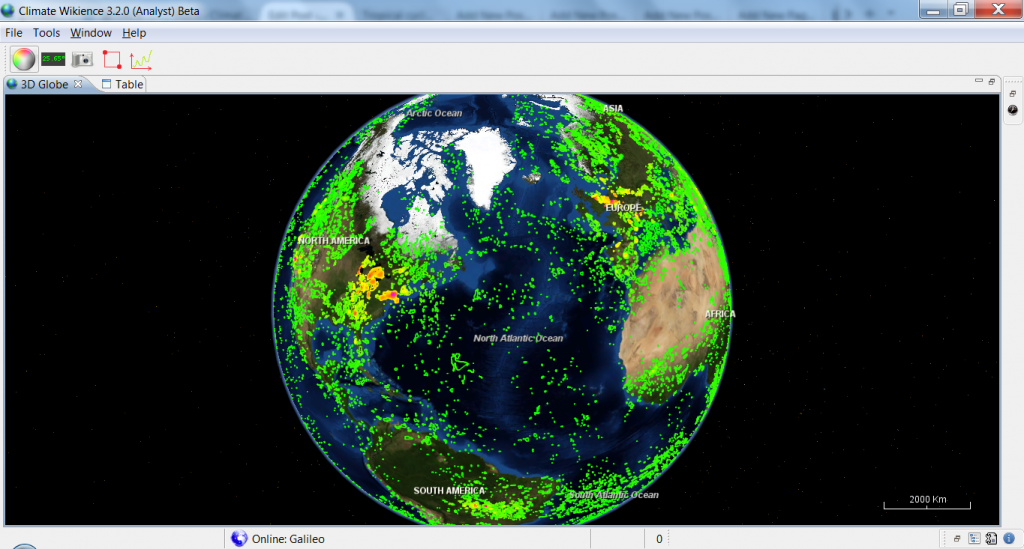 [7]
[7]
Zoom over Los Angeles.
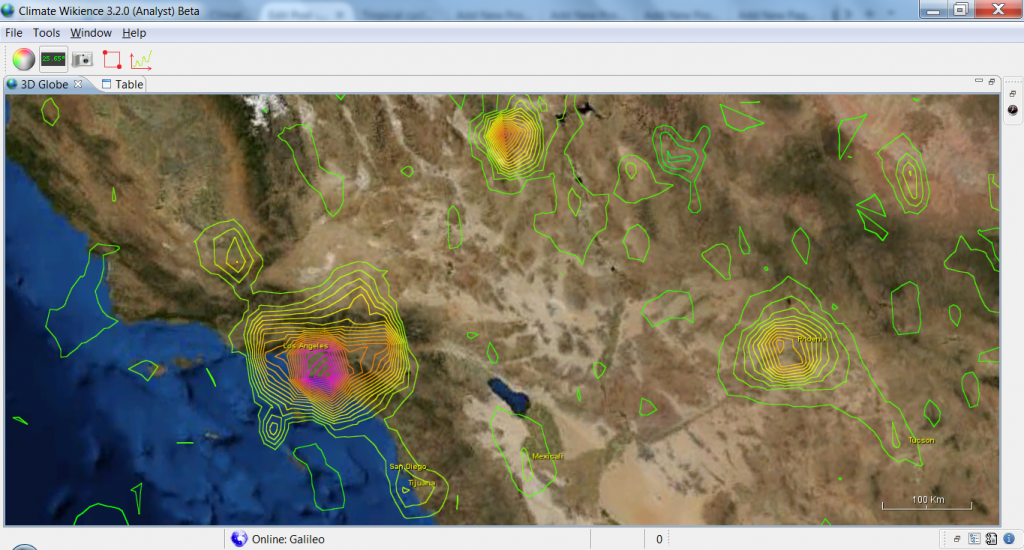 [8]
[8]
Terra MODIS Aerosol Optical Thickess (AOT) on the 1st of August, 2005.
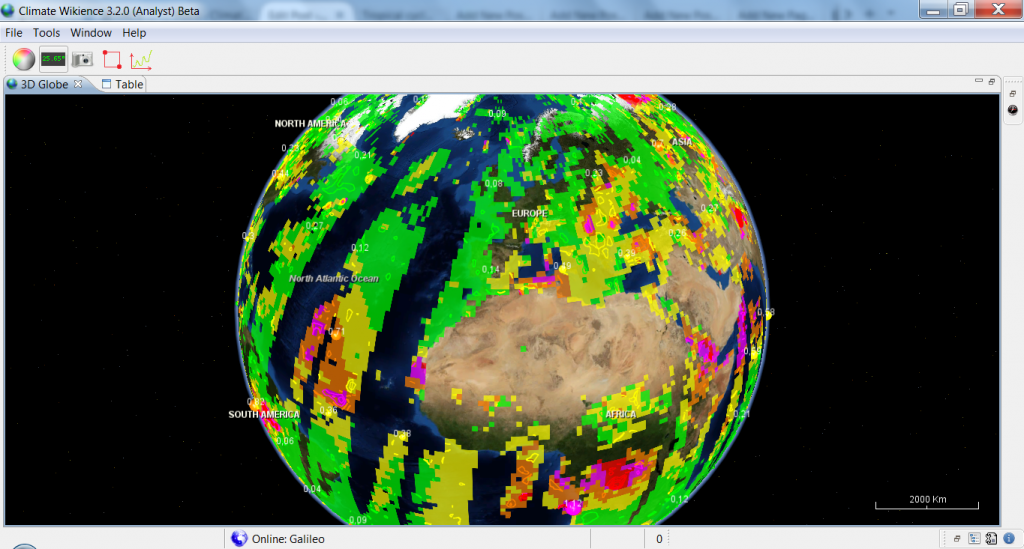 [9]
[9]
Zoom over Africa
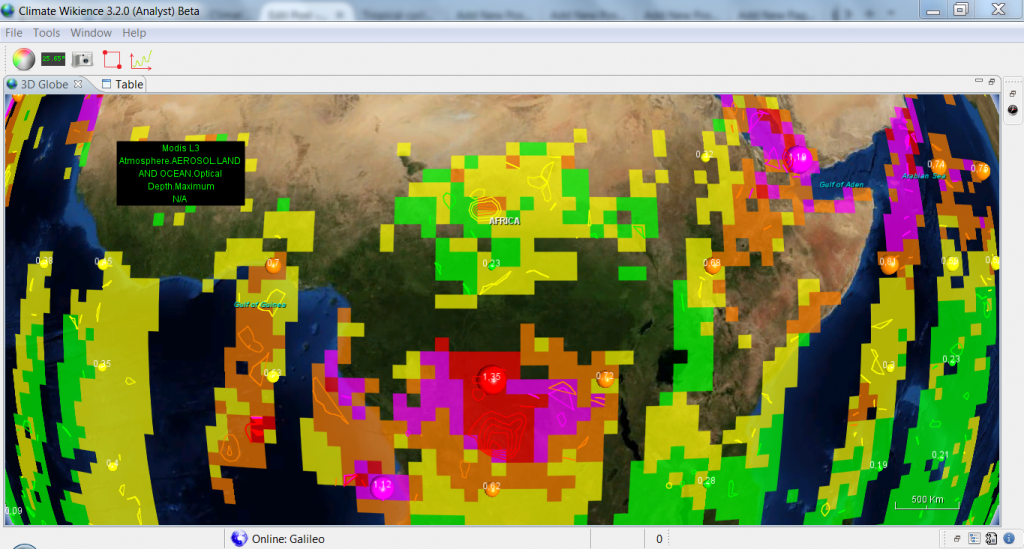 [10]
[10]
Terra MODIS Cloud Top Temperature on the 25th of August, 2005.
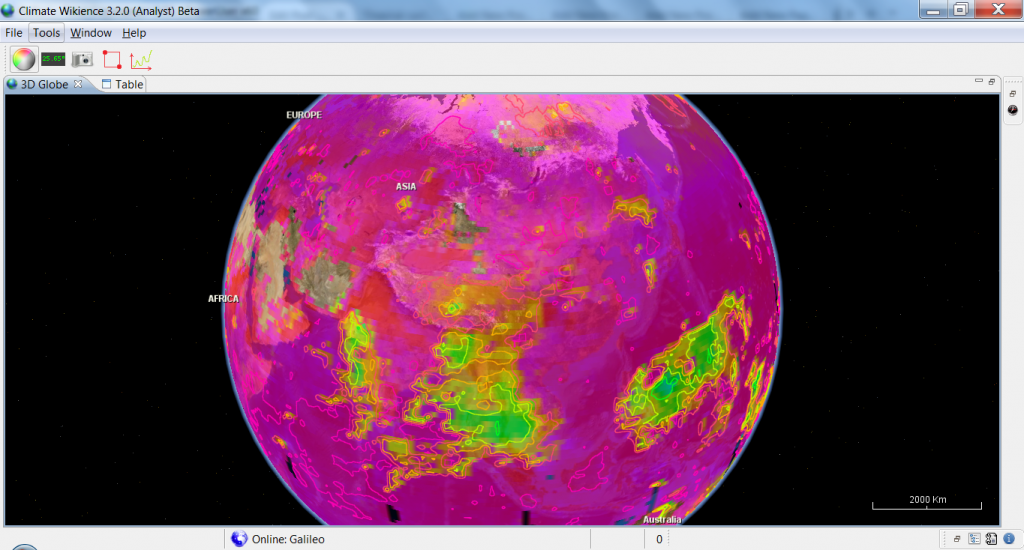 [11]
[11]
The 25th of August (2005) is the date for peak strength of hurricane Katrina.
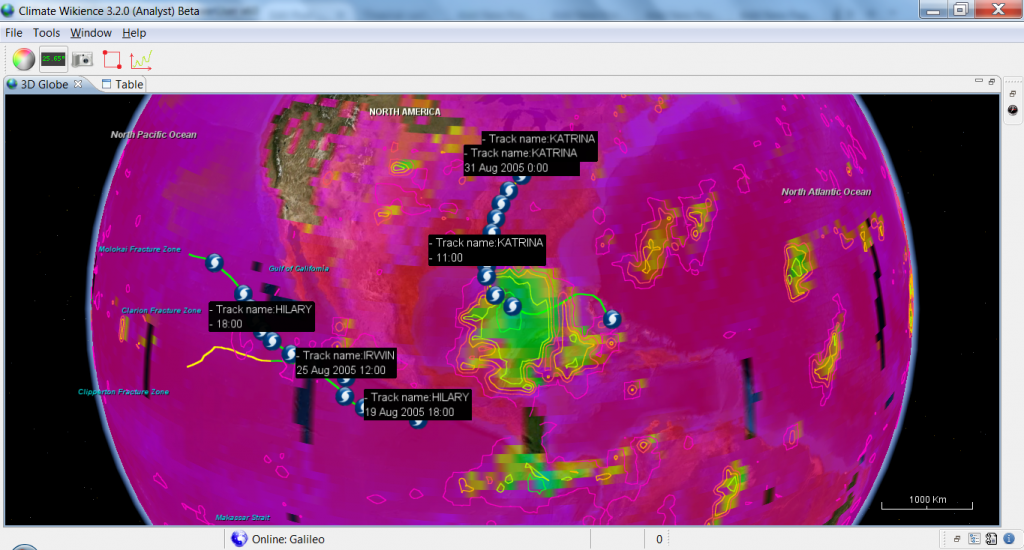 [12]
[12]
The same areas without tropical cyclone tracks and without surface.
 [11]
[11]
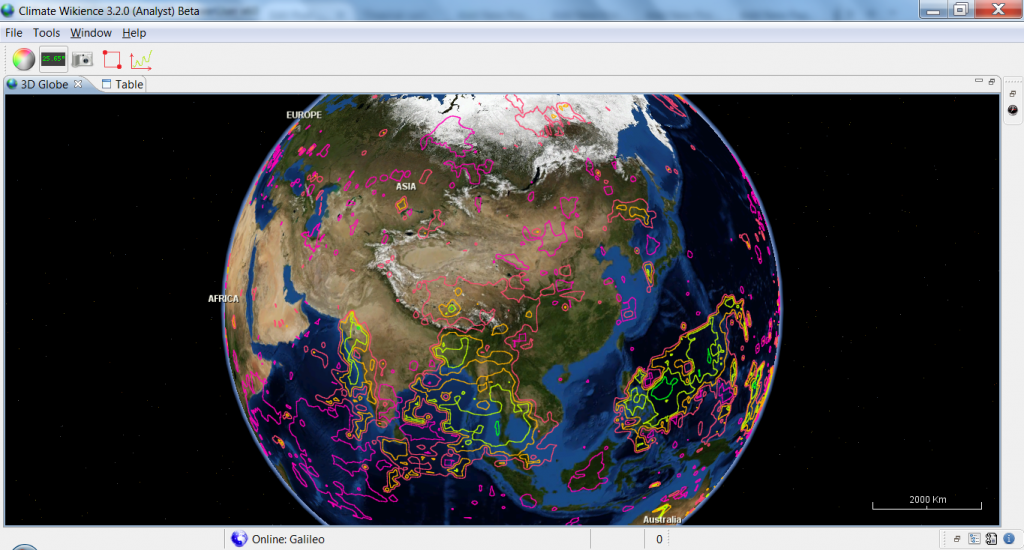 [13]
[13]
|
Climate Wikience is able to interactively visualize tropical cyclones. Find out more at Tropical cyclones page [14].
|
NASA MERRA Greeness Vegetation Fraction on the 28th of August, 2010.
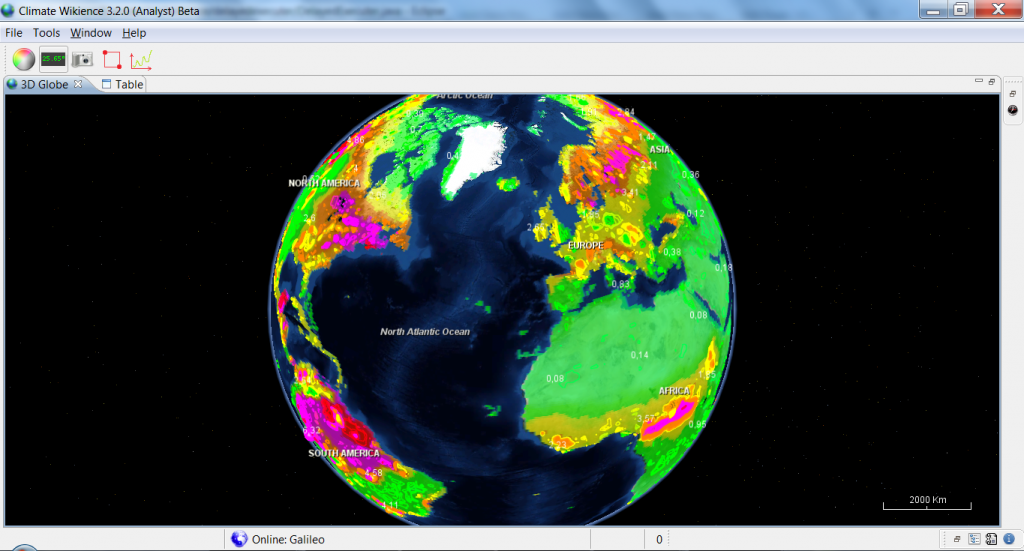 [15]
[15]
Zoom over North America and South America.
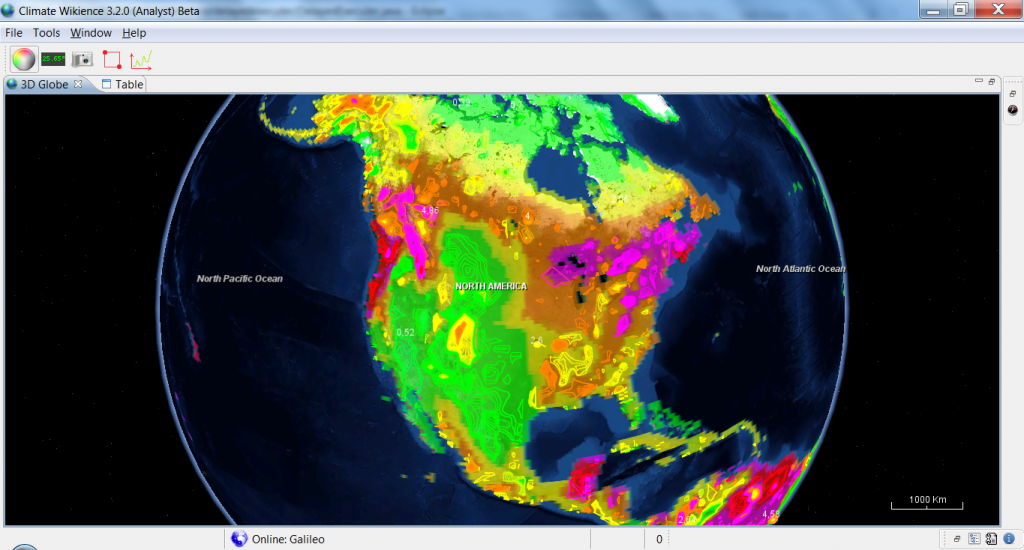 [16]
[16]
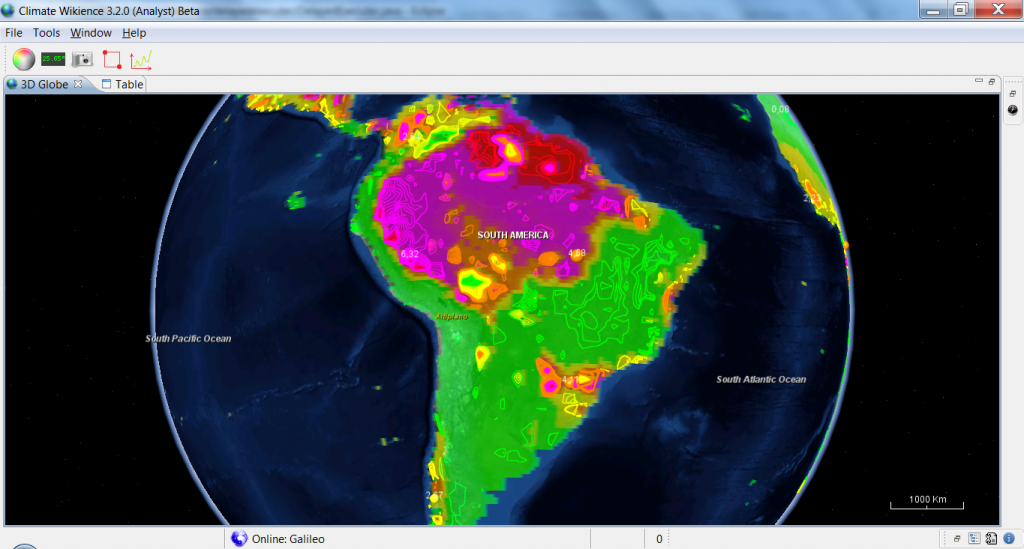 [17]
[17]
Download Climate Wikience [18]




